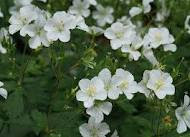AMERICAN WILD CHERRY, PRUNUS SEROTINA
The American wild black cherry is also known botanically as Prunus capuli, Cerasus capollin and Prunus salicifolia. It is related to other cherries, such as the morello cherry and as a member of the Rosaceae family it is a relation of the soft fruits; apricots, peaches, plums, loquats, raspberries, medlars as well as apples, pears, quinces, almonds, and a whole host of other fruit trees such as the blackthorn which produces sloes..It is also a relation of plants such as the silverweed, Alpine Lady's Mantle, Avens, Water Avens, cinquefoil and the rose and dog rose.
It gets the name serotina because it is a late flowering tree, as far as cherry trees are concerned. It has long clusters of flowers which bloom between the months of May and June, and the fruit ripen between in September, when they turn from red to black. This is of course much later than other cherry trees whose fruit is ripe in June or July.

This is the only native cherry tree in the US which is used commercially The early Appalachian pioneers used the ripe fruit to flavour their rum and brandy, giving rise to another name for the cherry - the rum cherry. It is also called the Mountain black cherry and the fruit is called black choke. Native American used these trees for medicinal purposes as well as for nutrition.
The leaves contain prunasin (a cyanogenic glycoside) and when crushed emit a cherry-like aroma of cyanide. This is converted to hydrogen-cyanide, which, in small amounts can stimulate the respiration and improve digestion. It has also been claimed that it is beneficial in the treatment of cancer. However in larger amounts in can cause respiratory failure and death. The seeds should not be eaten as these too contain the substance.
The trees can produce cherries for a hundred years, and are fast-growing to about 90 feet and 50 feet wide, towering above the other trees such as the sugar maple and beech, in the forests where they grow. The fruit can be used to make pies, jellies and wine, as well as ice cream. They are used commercially to flavour soft drinks, in baked products and so on as well as to flavour vodka.
The root bark and inner bark were used by many Native Americans.These have astringent properties, and were used as infusions for diarrhoea, fever, coughs, colds, sore throats and many other ailments. The root bark and inner bark should be steeped in warm water and not boiled for an infusion as boiling destroys the medicinal properties. A tisane of the root bark and inner bark was used by many Native Americans in the fist stages of labour to ease the pains, as it has sedative properties. The fruit was used as a treatment for dysentery.
A lotion made from the root bark was used as a wash to clean old wounds and sores. The fruits have antioxidant properties and are low in calories, although have a high natural sugar content.
The wood from these wild cherry trees is beautiful when polished and is used for furniture, cabinet-making and for the interior finish of buildings. It is also used to make small items such as toys, as well as to make musical instruments. The wood is also used for smoking food to impart its own unique flavour.
A green dye is obtained from the leaves, and the fruit will produce a dark-grey to green dye.
The trees were introduced to Central Europe as ornamentals and now they are becoming invasive in forests in Germany , Belgium , France and The Netherlands. An instance of a North American tree being an invasive species; usually the US has invasive species from Europe causing havoc to its ecosystems and biodiversity.

















